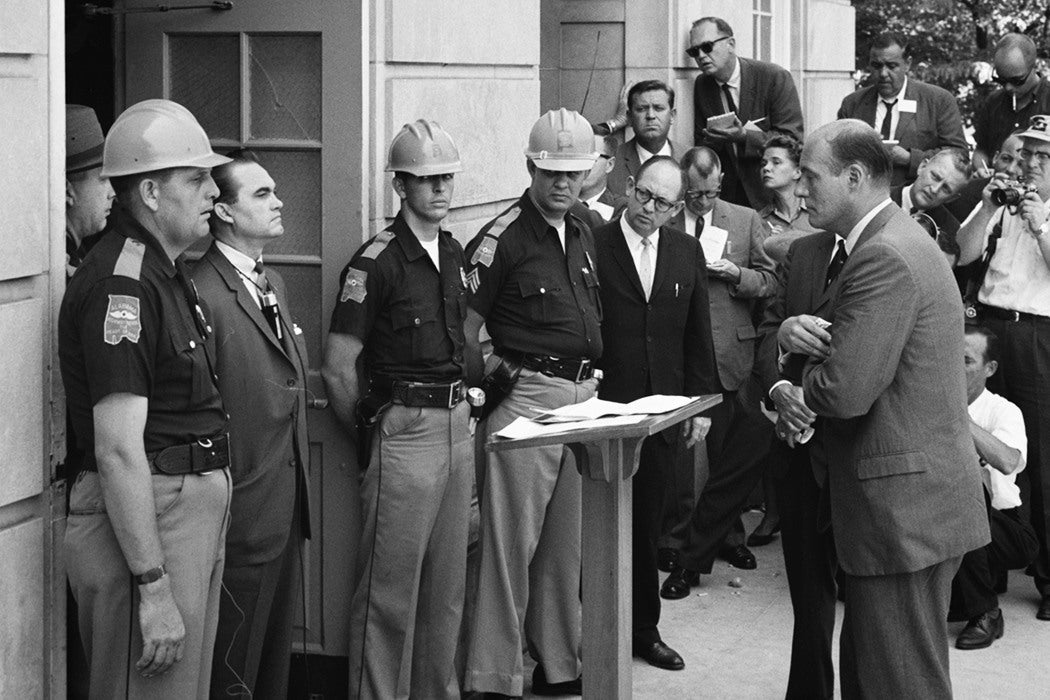Writing in the New York Times Magazine recently, Charles Homans repeated a story we often hear about the splintering of the Democratic Party starting in the 1960s. Homans writes that, in the 1964 Democratic primaries, segregationist George Wallace “performed well not just in the South but also in the white blue-collar enclaves in the few Northern states where he was on the primary ballot.”
Homans, like many commentators, argues that these working-class white voters defected to the Republicans as the Democratic Party became the home base for black Americans.
It’s clear that white racism and racial anxieties drove many Democrats from the party since the ‘60s. But it’s not obvious that this racial politics was particular to lower-income whites. Writing in 1966, political scientist Michael Rogin challenged the assumptions that were already beginning to form about working-class white politics.
At the time he was writing, Rogin noted that “scholars and journalists alike” had already decided the Wallace vote demonstrated a backlash against the Civil Rights movement specifically among the white working class.
The background for this conclusion was survey data that showed lower levels of education predicted more prejudice. But, Rogin wrote, responses depended on which questions pollsters asked. Among lower-income whites, 26 to 29 percent said they would accept black next-door neighbors, while only 14 to 24 percent of wealthier whites said the same. Similarly, lower-income whites were more open to having black coworkers.
Focusing on Wisconsin, a state where Republicans could vote in the Democratic primary, Rogin found that the way the vote broke down didn’t really support the theory of a specifically white, working-class backlash. Of 18 Milwaukee County suburbs, nine were working-class Democratic strongholds. The other nine were wealthier—with more professionals, managers, and businessmen—and tended to vote Republican.
Rogin found that Wallace carried no more than 42 percent of the vote in any of the Democratic suburbs. In the Republican suburbs, he won between 44 and 66 percent. Digging into the data, he found that support for Wallace correlated with professional and managerial employment, higher education levels, and support for the Republican candidate for governor in the last election. Places with more manufacturing employment, lower incomes, and more Polish-American voters were least likely to vote Wallace.
Weekly Newsletter
“The center of racist strength was not in working-class areas, but in the wealthy upper-middle-class suburbs of Milwaukee,” he concluded.
Statewide, Wallace did best in Republican, relatively wealthy, and urban areas, while he struggled in rural, poorer northern counties.
Rogan did not deny that Wallace’s racist rhetoric moved some working-class voters. As in the South, he wrote, an anti-black message proved especially salient for whites living in areas with more black residents. But when it came to the middle-class, “The potential presence of Negros terrifies them, as they perceive a threat both to property values and life styles.” In the end, it seemed that an anti-black message was most powerful for urban, middle-class voters.







